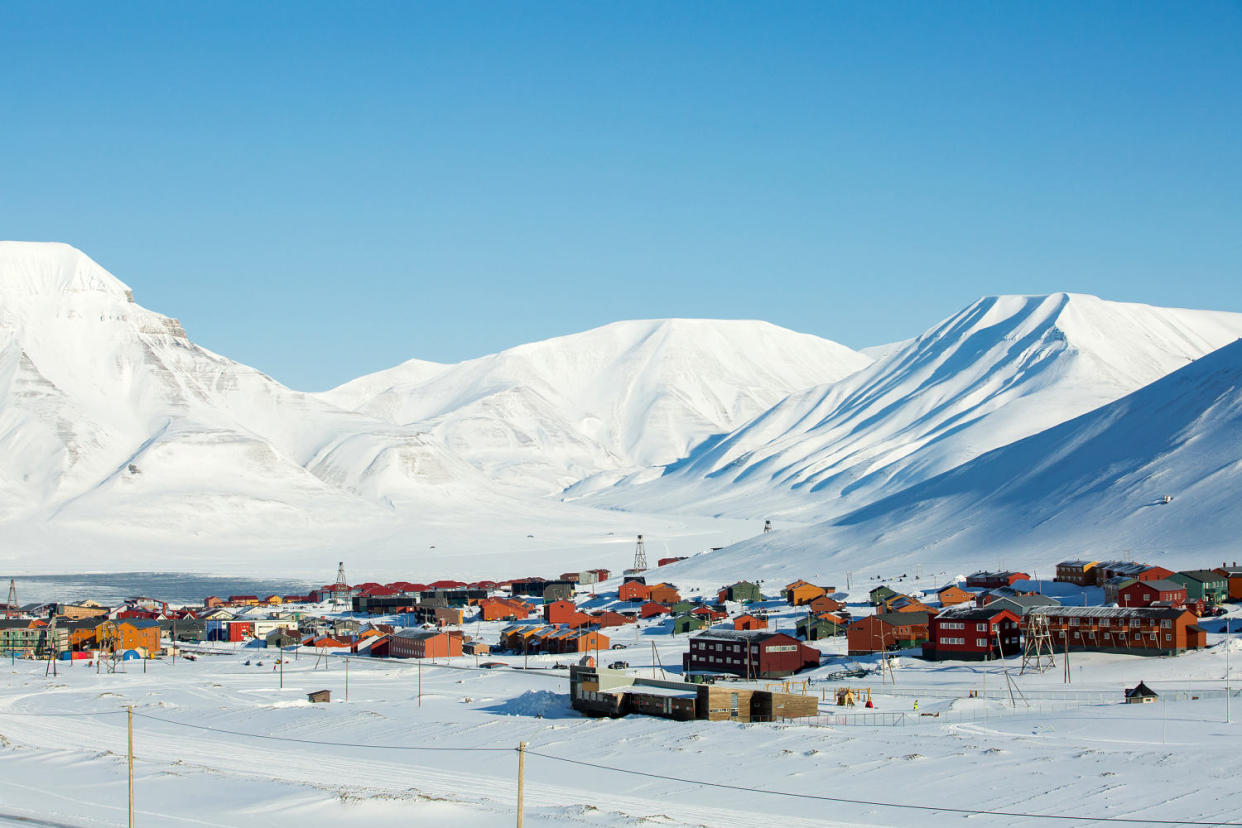Months without sunlight: how one woman survives the darkness
Cecilia Blomdahl has some advice for dealing with the winter doldrums.
A resident of Svalbard, a Norwegian archipelago near the North Pole, she’s something of an expert on dealing with the darker months of the Northern Hemisphere. Blomdahl is currently at the start of the annual “polar night,” a nearly three-month period during which her little corner of the globe receives almost no sunlight due to the tilt of the Earth.
On a recent walk with her dog at 2 p.m., Blomdahl recorded her icy surroundings and the crunching of her boots on the otherwise quiet tundra.
“It’s such a beautiful day,” she said in a video posted to her more than 2.7 million TikTok followers. Pointing her camera to a faint strip of light on the horizon, she added: “That is the only daylight we get today. That’s OK.”
It’s this sunny disposition in the face of extended darkness that has earned Blomdahl a surprisingly engaged following. Only about 2,500 people live in Svalbard, but her videos routinely draw hundreds of thousands and sometimes millions of views. Her most popular posts chronicle the challenges and excitement of coping with polar night, including taking vitamin D supplements, bathing in icy water and making her cabin as cozy as possible.
The tips are important, but her outlook might be the more impactful part of her videos.
“I dread the changing of the seasons, it depresses me to not have as much daylight,” one TikTok user commented on a recent video from Blomdahl. “You’ve started the conversation in my mind about how mindset might ease that discomfort.”

Blomdahl did not respond to an interview request.
Seasonal affective disorder, commonly abbreviated as SAD, has become a commonly recognized issue as less sunlight is believed to trigger changes in people including drops in serotonin and melatonin levels. Treatments can range from therapy and medication to lifestyle changes and artificial light therapy.
Blomdahl often encourages her followers to see the brighter side of the darker months.
“If you tell yourself that you hate winter, how do you think that’s going to change?” she said in a video. “I go into this season just looking forward to the darkness and the peace that it brings and how calm everything is. It’s a great time to focus on the smaller things in life, like a good movie or a great cup of coffee or just hanging out with your friends.”
Blomdahl also emphasizes spending time outside, even in extreme weather. Winter temperatures on Svalbard are often below freezing.
“I feel like this is the most important for me in a way,” Blomdahl said. “In order to not feel trapped in the darkness, I kind of have to head straight into it. So, I go hiking, skiing, walking, anything that gets me outside.”
Beyond the advice, Blomdahl’s videos offer a window into a unique part of the world where humanity meets the extremes of the Arctic.
The town of Longyearbyen — the largest inhabited area of Svalbard — has just one grocery store, one post office and one women’s clothing store, where Blomdahl used to work. Her cabin, which is located about 5 miles outside of Longyearbyen, does not have an address.

Babies are not allowed to be born in Svalbard and domestic cats are banned, but polar bears abound on the island. Anytime residents travel outside of the Longyearbyen limits, they’re required to carry firearms to protect themselves from polar bears. For those like Blomdahl, who live outside the village, that means they must carry a firearm whenever they go outside.
Svalbard may not have a bookstore or a hospital, but it does have what Blomdahl calls a “doomsday vault.” It is a global seed vault, which burrows over 300 feet into a snow-capped mountain and holds over 1 million seed samples from all over the world to “safekeep them for future generations.” The vault, which is funded by the Norwegian government, provides long-term storage for seed samples to ensure security of the world’s food supply in case of natural disasters or other extraordinary events.
But she can make all that seem relatively normal. During the “absolutely pitch black” period of polar night, Blomdahl highlights her daily life. She and her boyfriend don headlamps to take their dog — a Finnish Lapphund named Grim — for walks, watch Christmas movies, and engage in the town’s holiday activities, such as an annual torch walk welcoming Santa Claus. Blomdahl even continues to get manicures from one of the island’s nail techs.
Even on the darkest days of polar night, Blomdahl says she “thrives in winter.”
When asked why she chooses to live at the northernmost edges of human civilization, Blomdahl said she sees the “challenges of the harsh climate” as something she “gets to experience,” rather than something to “work against.”
As Blomdahl bids farewell to the sun until next year, her followers are eager for their third polar night in the Arctic Circle. Some have even said they are planning trips to visit the island and experience the serenity of Svalbard in person.
“I love your content so much,” one commenter wrote on a recent video. “Your life is so different from mine, so interesting.”
